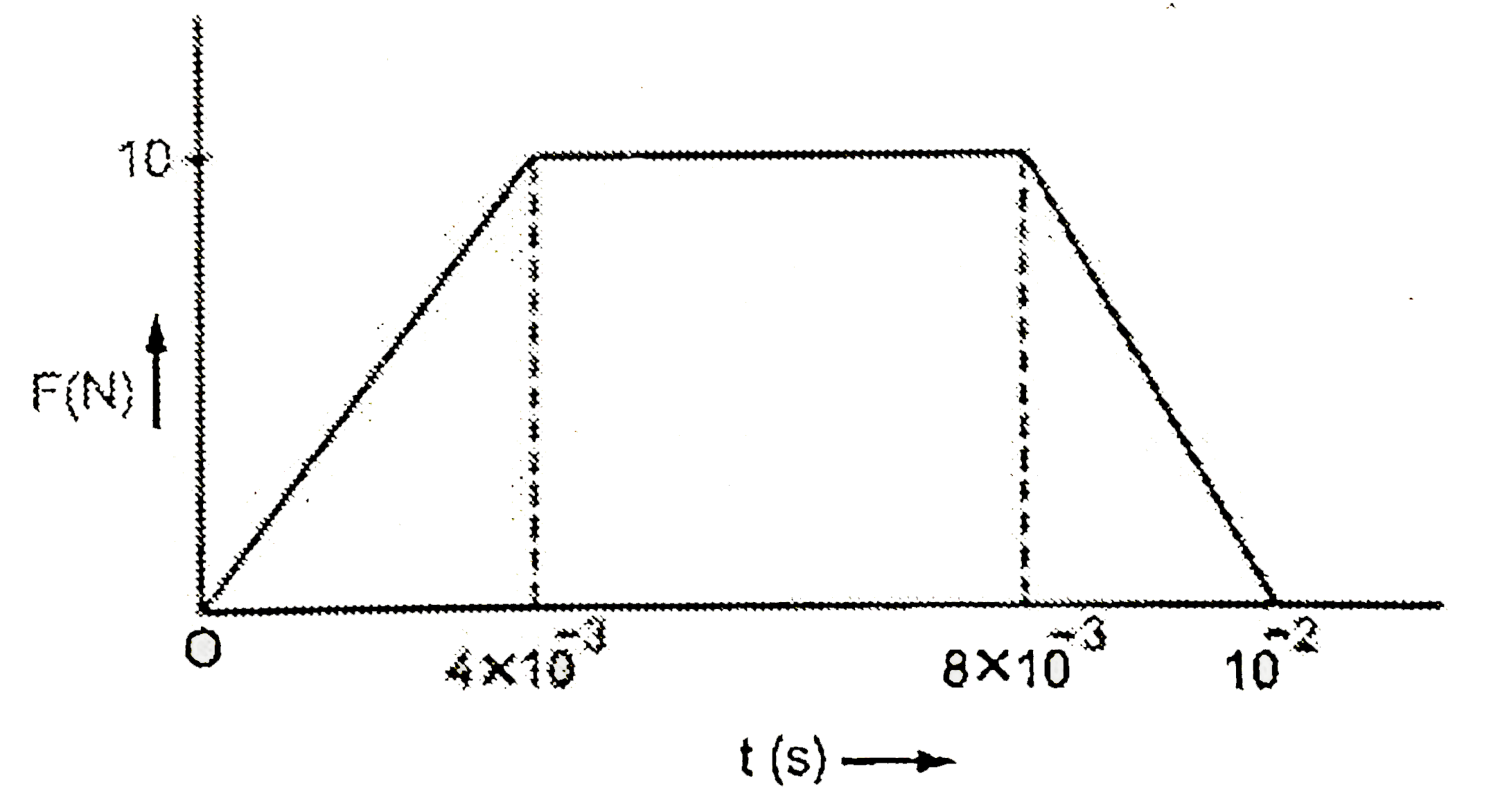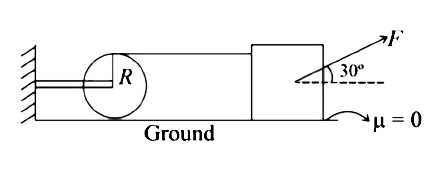A particle of mass 70 g moving at is acted upon by a variable force as shown in the figure. What will be its speed once the force stops?

By the principle of homogeneity, is of the dimensions of pressure and b is of the dimensions of volume.
[a] = [pressure]
[b]
Topper's Solved these Questions
Similar Questions
A particle of mass 70 g, moving at 50 cm/s , is acted upon by a variable force opposite to its direction of motion. The force F is shown as a function of time t

(a) its speed will be 50 cm/s after the force stops acting
(b) its direction of motion will reverse
(c) its average acceleration will be 1m/s2 during the interval in which the force acts
its average acceleration will be 10m/s2 during the interval in which the force acts
View SolutionA particle of mass 120 g moving at speed of 750 cm/s is acted upon by a variable force opposite to its direction of motion. If the velocity of the particle becomes 250 cm/s along the direction of force, find the value of time 't' for which acted.
View Solution
Knowledge Check
A particle of mas 70g, moving at 50cm/sis acted upon by a variable force opposite to its direction of motion. The force F is shown as a function of time t.
 AIts speed will be 50cm/s after the force stops actingBIts direction of motion will reverseCIts average acceleration will be 1m/s2 during the interval in which the force actsDIts average acceleration will be 10m/s2 during the interval in which the force acts.
AIts speed will be 50cm/s after the force stops actingBIts direction of motion will reverseCIts average acceleration will be 1m/s2 during the interval in which the force actsDIts average acceleration will be 10m/s2 during the interval in which the force acts.A particle of mass m , initially at rest , is acted upon by a variable force F for a brief interval of time T. It begins to move with a velocity u after the forrce stops acting . F is shown in the graph as a function of time. The curve is a semicircle.
 Au=πF202mBu=πT28mCu=πF0T4mDF0T2m
Au=πF202mBu=πT28mCu=πF0T4mDF0T2mA particle of mass m, initially at rest is acted upon by a variable force F for a brief interval of time T. It begins to move with a velocity u after the force stops acting. F is shown in the graph as a function of time. The curve is a semicircle. Then
 Au=πF202mBu=πT28mCu=πF0T4mDu=πF0T2m
Au=πF202mBu=πT28mCu=πF0T4mDu=πF0T2m
A particle of mass m at rest is acted upon by a force P for a time t. Its kinetic energy after an interval t is
View SolutionA block of mass m at rest is acted upon by a force F for a time t. The kinetic energy of block after time t is
View SolutionA block of mass m at rest is acted upon by a force F for a time t. The kinetic energy of block after time t is
View SolutionA particle of mass m at rest is acted upon by a force P for a time t. Its kinetic energy after an interval t is
View SolutionAs shown in the figure a block of mass 1 kg connected with a pulley of mass 1 kg and radius 10 cm is acted upon by a variable force of F = kt, as shown. Angular acceleration of pulley when block leaves the contact with ground is:

View Solution
